1953 Corvette Overview – The Ultimate Guide
After the incredible success of the prototype at the 1953 Motorama in New York City, Corvette went from being the fantastic concept car designed by Harley J. Earl to an, (as yet unrealized), production car that was already commanding great deals of attention. Hoping to capitalize on the favorable public opinion and the overwhelmingly positive reviews by the press, General Motors put the Corvette on a fast track to production.
While the reality behind Corvette was that Chevy Division chief Tom Keating and then GM president Harlow Curtice had already green-lighted Earl’s concept car for production, the positive public reaction that the car had received only increased the company’s resolve to bring the Corvette to market as soon as possible.
In order to meet the demands to begin production that had been set upon them by the top people at General Motors, the first Corvettes were literally engineered as they were being fabricated.
Manufacturing problems, such as Glass Reinforced Plastic (GRP, more commonly known as “fiberglass” today) molding techniques were far from being perfected and additional experimentation was necessary before production could truly begin. Chevy had to build several different iterations of the Corvette body before the company heads were convinced that fiberglass was truly the way to go.
The first Corvette (serial number E53F001001) reached the end of the assembly line on June 30, 1953. All 300 cars would go on to be built by hand in the back of a customer delivery garage in Flint, Michigan. Because nobody had ever mass-produced a fiberglass car prior to the Corvette, the process of assembling these first cars was performed largely by trial and error. The first two cars were engineering test cars and, according to official records, were later destroyed. Despite the engineering capacity of the facilities available to the Corvette manufacturing team, the initial target of just 50 cars a month was set while GM continued to sort out the production process behind the assembly of the Corvette’s fiberglass body.
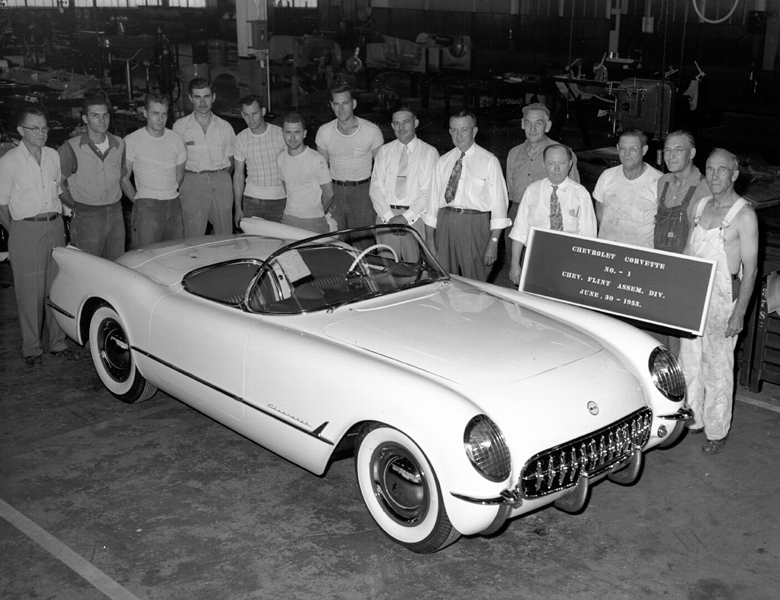
DID YOU KNOW: The 1953 Corvette is probably more desirable today than it was when it was new. Because the first Corvette was limited to a total production of just 300 units combined with the fact that 1953 was the first year the car was produced make it one of the rarest and most sought after / collectible Corvettes of all time. Of the first 300 1953 Corvettes, approximately 225 are still known to exist today.
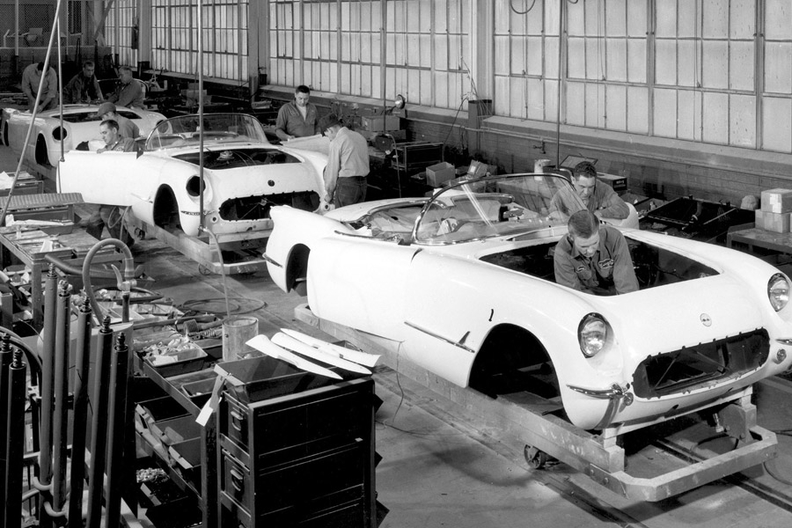
Each fiberglass body began as 46 separate pieces that were supplied by the Molded Fiber Glass Company in Ashtabula, Ohio. Workers had to fit all of these into wooden jigs, then glue them together into the larger subassemblies. All of this increased the probability for error and vastly increased assembly time. Even worse, many of the pieces did not fit together well as delivered because of molding flaws that required still more hand labor to correct.
To eliminate further confusion and additional manufacturing delays, all of the first 300 Corvettes were built the same way, enabling workers to concentrate on putting the bodies together properly without feeling rushed and without the distraction of trim and equipment variations.
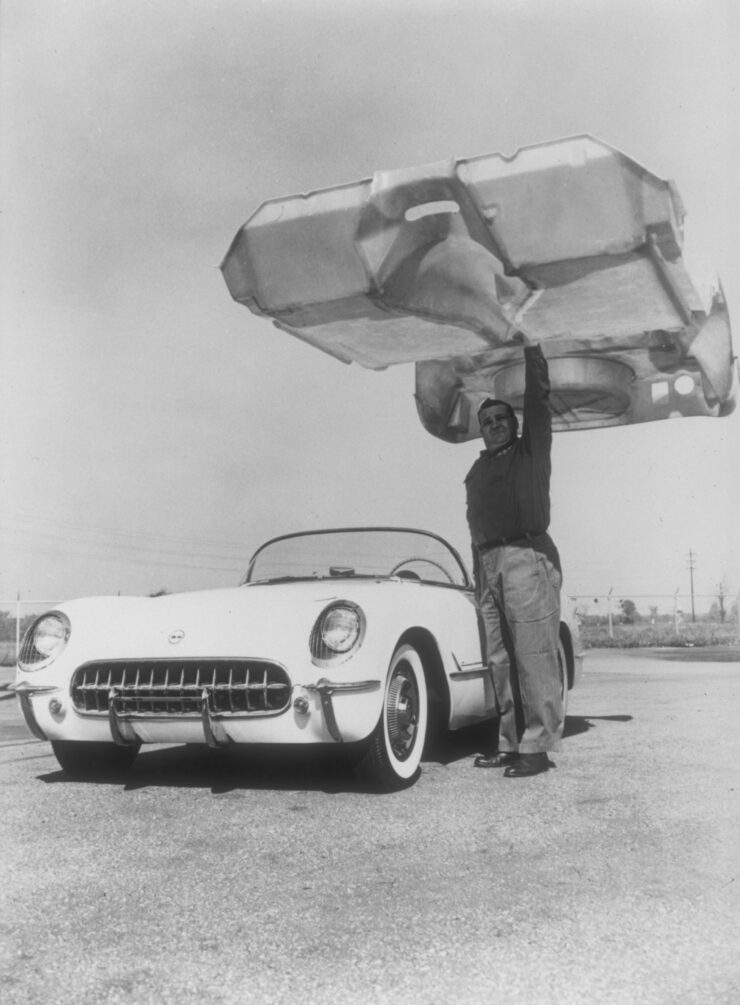
As a result, all 1953 Corvettes were painted Polo White and had Sportsman Red interiors (like the concept car before them), with black tops, 6.70 x 15 four ply whitewall tires, Delco signal-seeking radios, a standard array of analog instruments which included a 5000-rpm tachometer and a counter for total engine revolutions ( a feature that would continue through 1959).
When introduced in 1953, the Corvette featured the “Blue Flame”six cylinder engine (also known as the “Stovebolt Six“ by the engineering teams at GM). Although other of General Motors car models featured V8 engines, they were not willing to share these more powerful engines with the new Chevrolet concept car.
The “Stovebolt” six cylinder was renowned for reliability but with an engine rating of only 105 horsepower, it lacked the performance and sportiness that people expected from a two seat sports car.
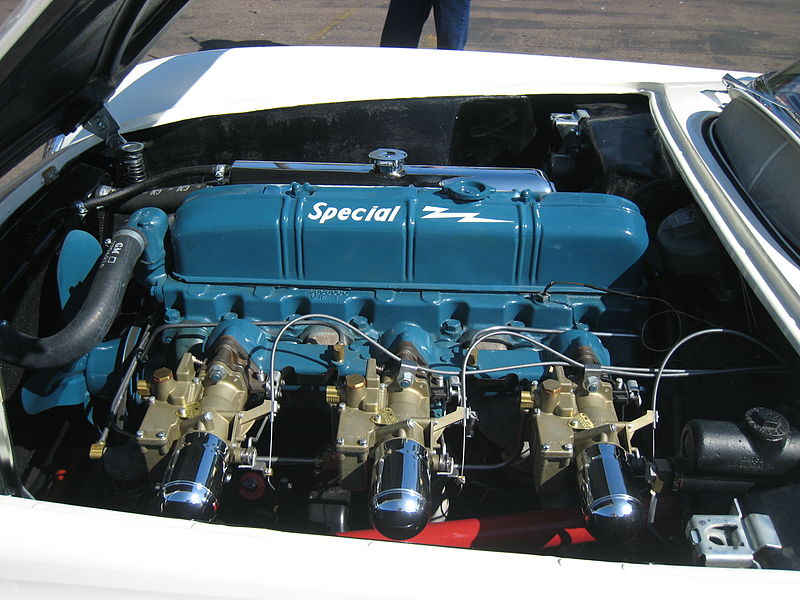
A more radical camshaft, solid lifters, dual valve springs and a higher compression ratio cylinder head all contributed to an increased engine output of 150 brake horsepower, but still left many potential buyers questioning the overall performance capabilities of the first Corvette.
Even before the first production Corvettes rolled off the assembly lines, the car had began to suffer from a type of “identity crisis.” The term sports car generally indicated a car that had race-track level performance, along with the discomfort and added noise that such a car usually entailed.
Attempting to appeal to a broader audience than merely that of the sports-car variety entrepreneurs, Corvette was designed to offer “comfort and convenience” which caused the car to fall dramatically short of the expectations of sports car enthusiasts.
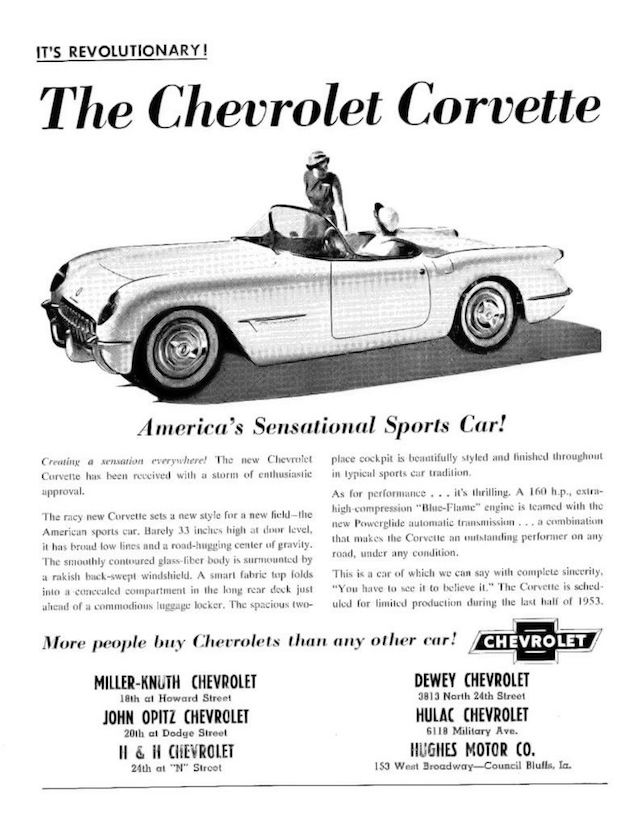
At the same time, the more compact, two seat body and it’s obvious sport car appearance alienated the car from those who regarded it as a viable, weekend cruiser. Adding further insult to injury, the car was somewhat crude, offering awkward, clip-on side curtains with Plexi-glass windows that were drafty and prone to leaks.
In an effort to enhance the Corvette’s image as a prestige car, dealers restricted sales to VIPs in each community: mayors, celebrities, industrial leaders and favorable customers. It did not take long for word to spread that the year’s entire expected production had already been spoken for.
In other words, Chevy had made the deliberate choice not to sell Corvettes to the public – at least for the time being. For all the demand the Motorama car had generated, neither consumers nor dealers could obtain one.
As a promotional endeavor, Chevrolet began to use the first available production Corvettes as dealer-display attractions. Each of the eight Chevrolet wholesale regions was assigned a car to send from dealer to dealer for one to three day showings during the last three months of the year.
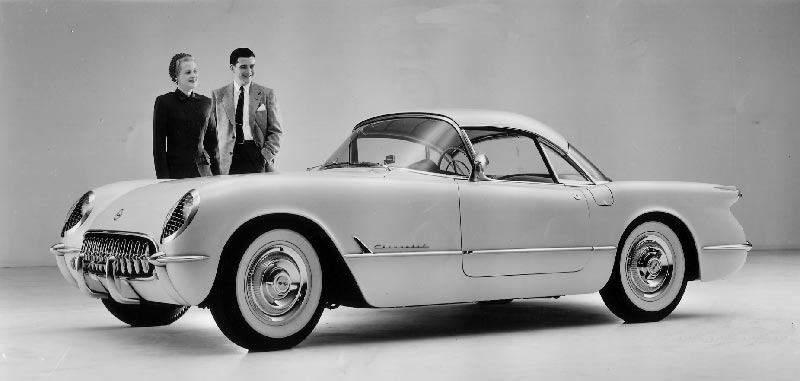
While it is common today for limited production cars to sell out before they are even released, this was a practice that was unheard of in the 1950s.
The Corvette was publicized as being glamorous and exciting, especially compared to the rest of Chevrolet’s more commonplace passenger-cars. The intent was to market pre-sales of the Corvette, combining word-of-mouth testimonials from the selected VIP first owners of the 1953 Corvettes with a marketing campaign that lavished praise on the Corvettes styling, performance and grandeur, enticing would-be buyers into paying a premium for a car which was not yet publicly available.
With news stories circulating across the United States about the Corvette being spotted everywhere but not being available to the public anywhere, many potential consumers began to question whether GM was merely trying to pull a “fast one” by luring prospective buyers into dealerships with the promise of a Corvette only to have the dealer attempt to sell them something else.
In fact, some wondered if the new Corvette “dream car” was going to remain a dream for all timeWhile the concept behind the marketing strategy was ingenious, it backfired dramatically in the months that followed. GM had turned to it’s VIP’s as opinion leaders for the Corvette but, unfortunately for GM, the majority of them did not like the car anywhere near as much as the marketers had hoped they would.
The car was criticized as possessing too much “jet age” styling, of being “non-functional and faddish”, of containing clumsy add-ons (such as the aforementioned side windows), “off the rack” mechanicals and a price tag that was far in excess of what the car was actually worth.
With a final sticker price of $3,490, the Corvette was out of reach for many of the younger consumers for which the car was being marketed, further bringing into question the viability of this new sports car.
1953 Corvette Specifications & Performance
Engine & Transmission
When introduced in 1953, the Corvette featured the “Blue Flame” six cylinder engine. This is not as the Chevrolet engineering team wanted things, but they had no choice. Although other GM marques featured V8 motors they were not willing to share; a very different situation compared to years later when various divisions would feature the same powerplants. It was renowned for reliability but with a rating of 105 horsepower, performance and sportiness were not included.
The engineering staff responded with the usual engine upgrade methods. A more radical camshaft rubbing on solid lifters, dual valve springs, and a higher compression ratio cylinder head (8.0:1; previous was 7.5:1) all contributed to the effort. The largest gain was achieved via an upgrade to the induction system (right). Three Carter type YH side draft carburetors featuring “bullet” air cleaners with an aluminum manifold were incorporated and the output soared to 150 bhp at 4,500 RPM.
Performance
The 1953 Corvette had a glacial 0-60 mph time of 11.2 seconds and hit 100 mph in 39 seconds. The quarter mile was 17.9 seconds @ 77mph. Top speed was 108 mph. See the complete breakdown of technical specifications for the 1953 Corvette, including engine, suspension, brakes, body dimensions, and power, read more in our detailed section on 1953 Corvette Specifications.
Read more: 1953 Corvette Specifications.
1953 Corvette Vehicle Identification Numbers (VIN)
The last three digits begin at 001 and run through 300, accounting for each of the 300 Corvettes built in 1953. Each Vehicle Identification Number (VIN) is unique to an individual car. For all 1953 Corvettes, the location of the Vehicle Identification Number (VIN) is located on the driver side door post. The VIN is also stamped in several locations on the Corvette frame.
The first Corvette came off the assembly line on June 30, 1953. There were 300 Corvettes produced in total. The first two were destroyed… they were engineering test cars. This is still the rarest of all model year production Corvettes. It is estimated that about 225 1953 Corvettes still exist.
Read more: 1953 Corvette VIN details
1956 Corvette Price & Options
Core Features & Factory Options
All 1953 Corvettes were Polo White with a red interior and a black canvas top. There were two options offered: a signal seeking AM radio ($145.15) and a heater ($91.40). Although listed as options, all 1953 Corvettes were equipped with both items. The base price was $3,498.00, including the federal excise tax and $248.00 for shipping and handling. The radio had an interesting feature: since fiberglass is electrically inert, the antenna was simply incorporated in the trunk lid. This would not be possible with a conventional steel body.
Colors
For those who like color choices, this 1st generation Corvette (C1) was only available in white with a red interior.
Pricing & Options
| CODE | DESCRIPTION | QUANTITY | RETAIL PRICE |
| 2934 | Base Corvette Roadster | 300 | $3,498.00 |
| 101A | Heater | 300 | $91.40 |
| 102A | AM Radio, signal seeking | 300 | $145.15 |
Read more: 1953 Corvette pricing and factory options.
1953 Corvette Gallery
As introduced in 1953, the Corvette was mostly a thrown together experiment. Production was limited to 300 units total, so sales of the entirely new model were not a problem. All 1953 Corvettes were Polo White with a red interior and a black canvas top.
See full 1953 Corvette Gallery


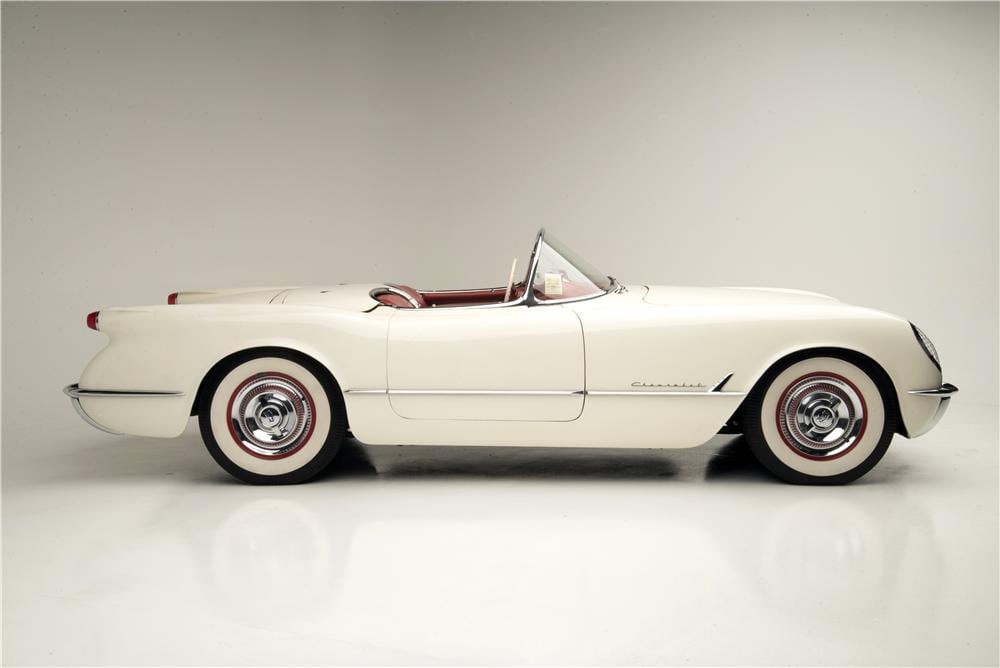
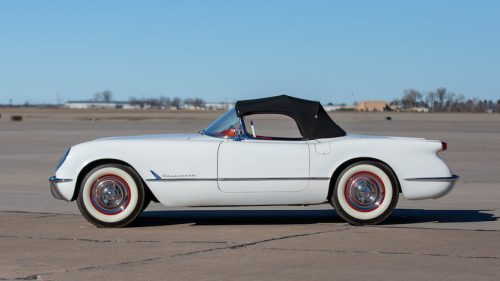
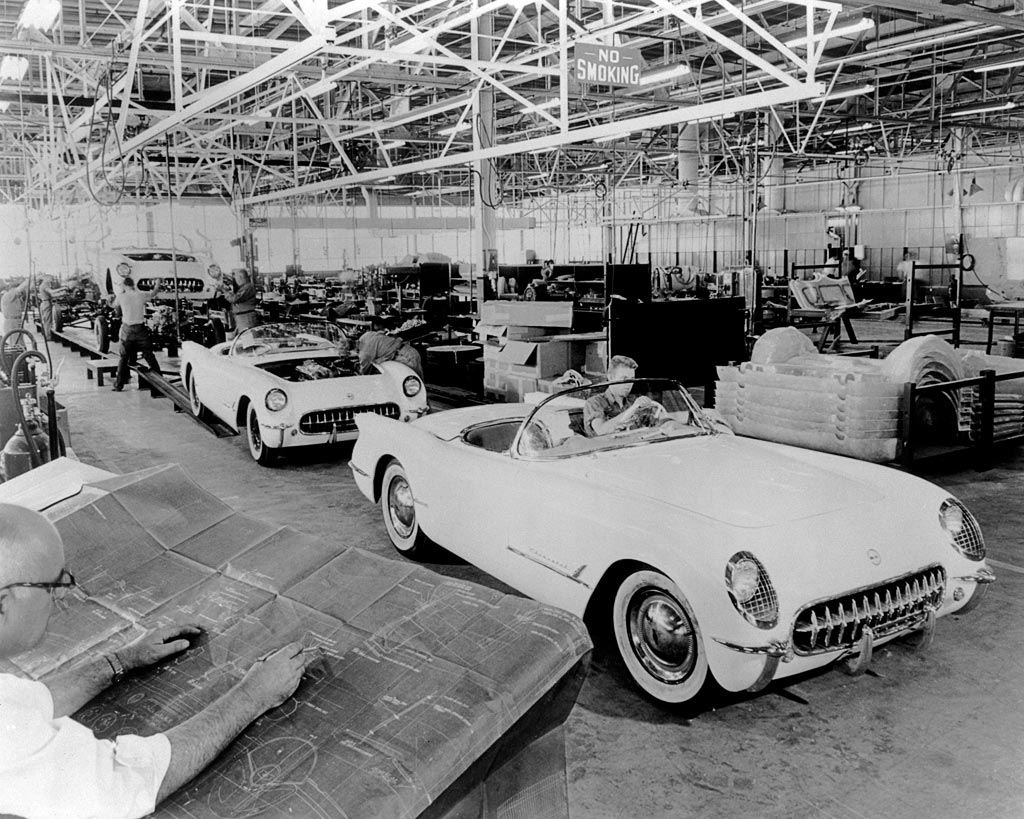
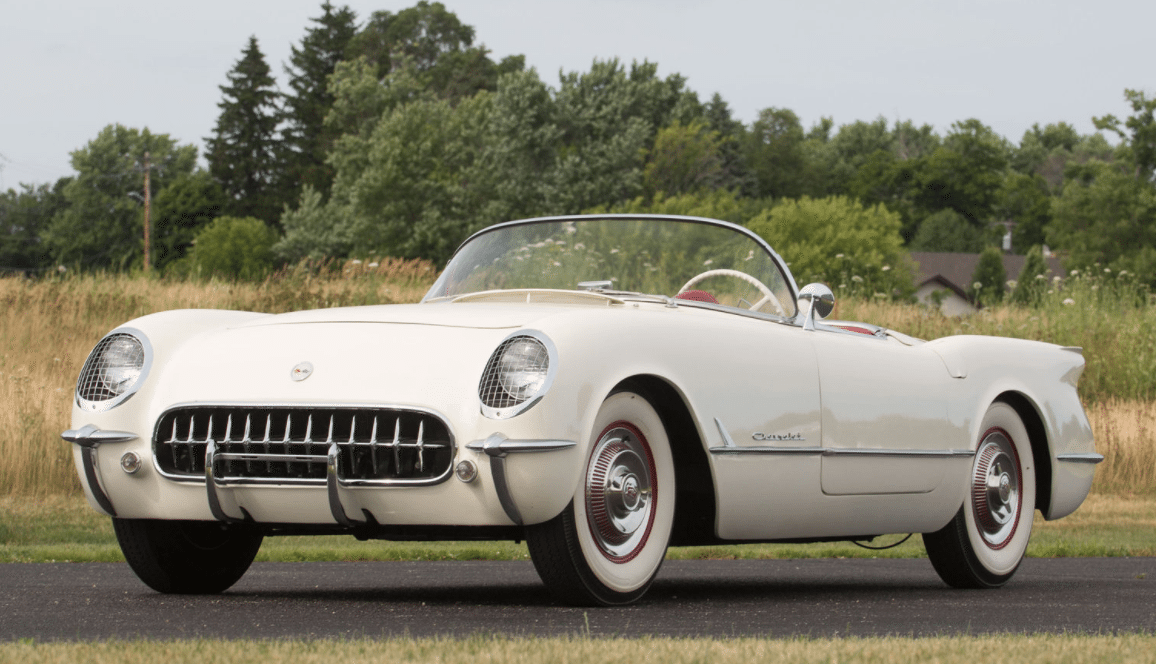
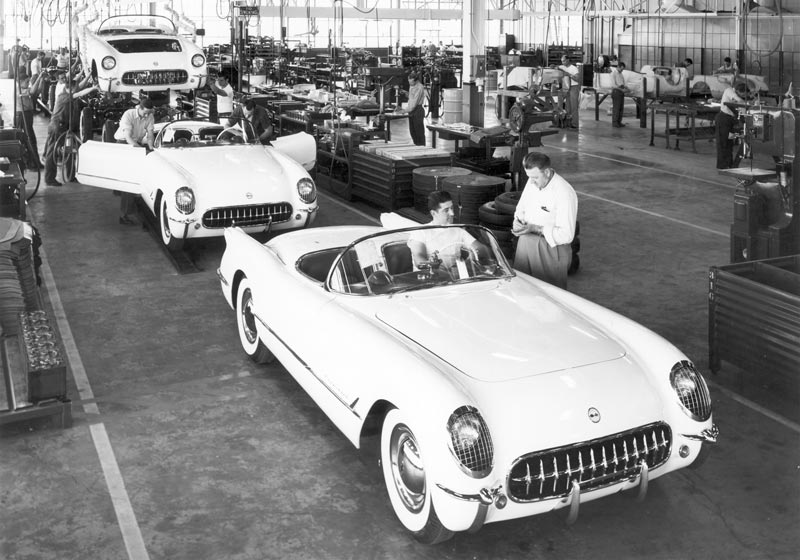
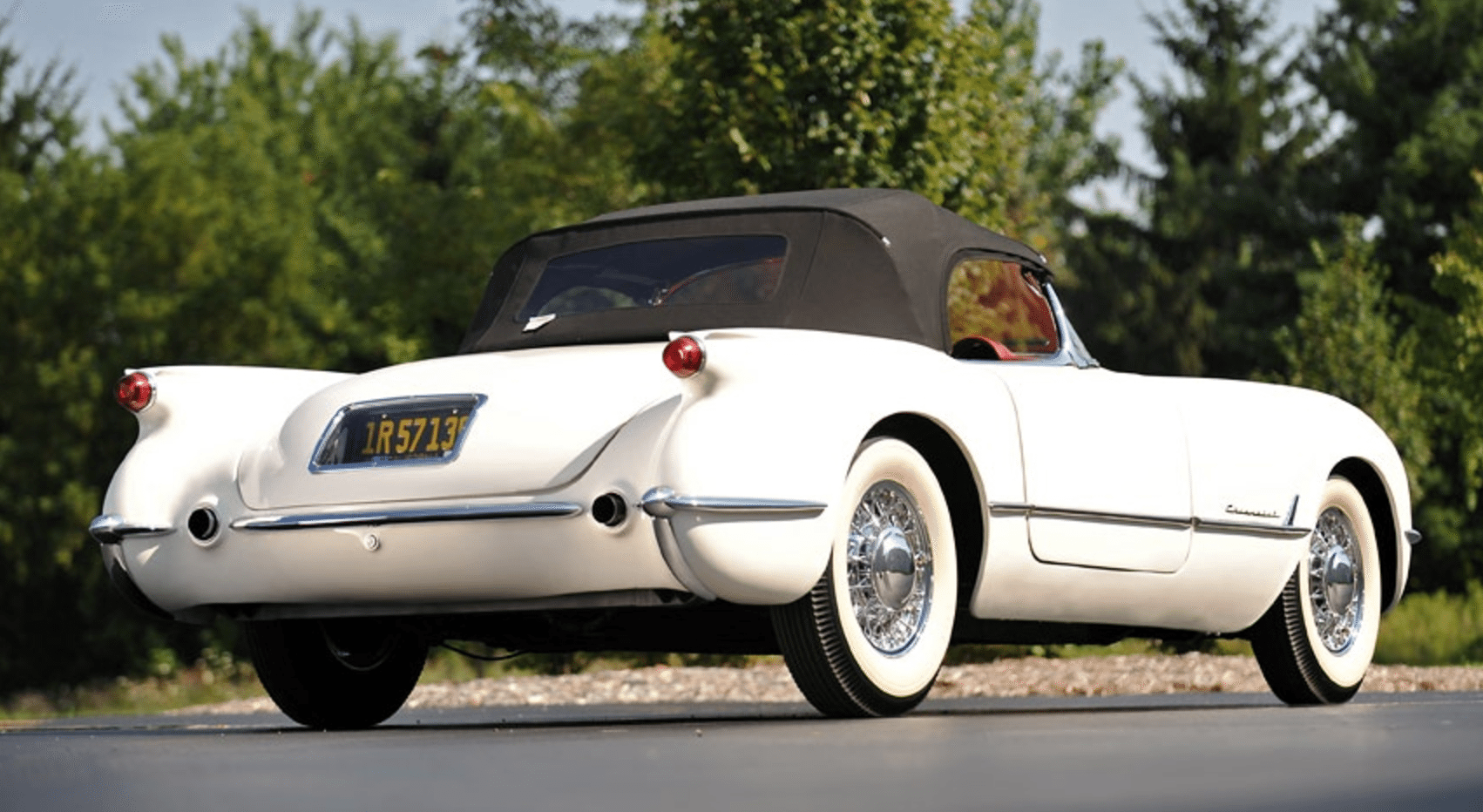
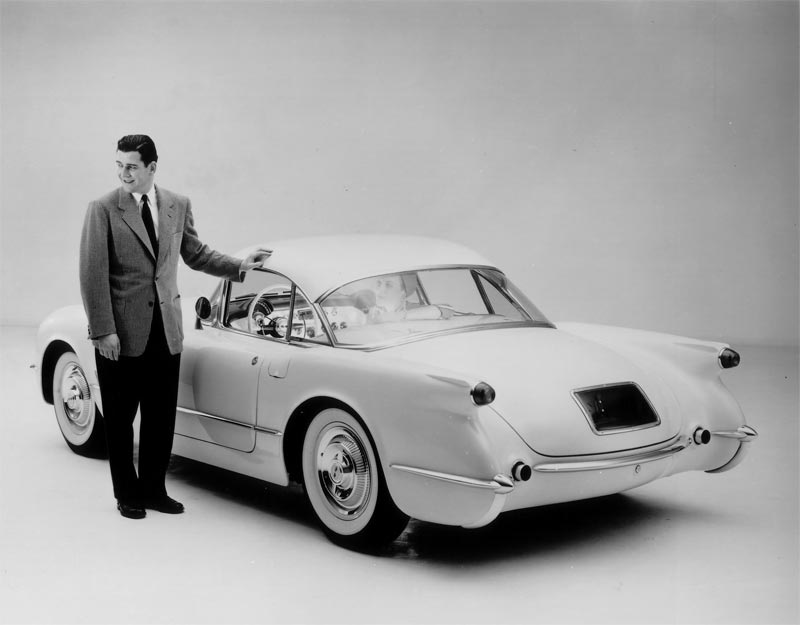
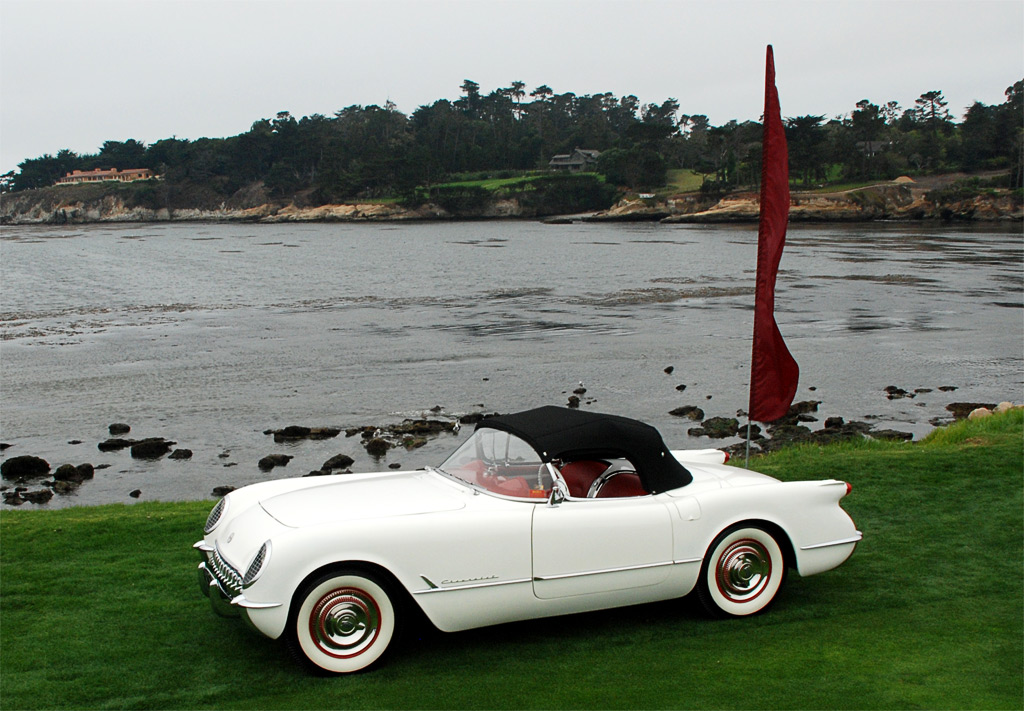
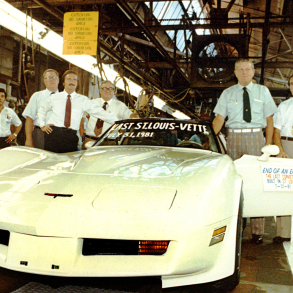

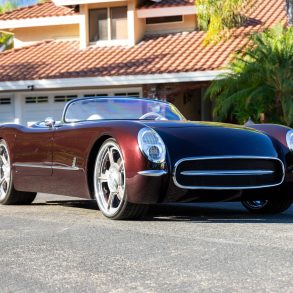

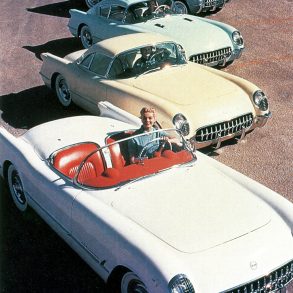

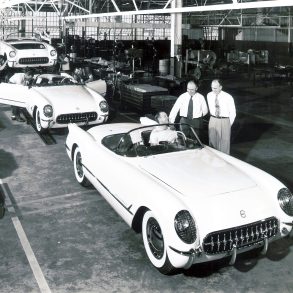
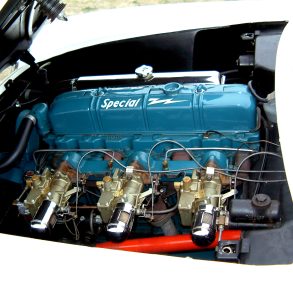

I drove one of the first 1953 Chevrolet Corvettes on the streets of Chicago back in September 1953 and wondered where it ended up. Can you give me any help here?
I often regretted that I did not buy it, but $3,900 was a lot of money back then, especially for an 18 year old car delivery person. Yes, we delivered the new cars back then. We would attach a 3 wheel motorcycle to the rear bumper, (yes, the bumper) deliver the car and take the motorcycle back to the dealership. Thanks for any help or information.
Bob Kassner
Our car club Wilmington Automotive Activities had 1953 Corvette #6 donated to us by Lex DuPont in 1961. Rally raced then turned it into a drag car which it ran high 11 seconds. Car was sold in 1973 and restored
I still have the last registration card to prove.
Thats fantastic! We’d love to know more about your history with that car. Feel free to contact me directly at scott@a07online.com.
Respectfully,
Scott Kolecki
Corvsport.com
Is there a registry for 1953 corvettes?? How well are they documented?
I was a senior in high school and smashed a 1953 Corvette into a brick wall in March 1954, they didn’t know how to fix fiberglass so they used wood putty. I still have the bills for the work done on it. I wonder if somebody still has that car? There is a real good story behind this.
My great-grandfather led the design team for the body of this car, but he rarely gets a mention. Joseph Hinding was Harvey Earl’s right-hand man. Even when he is in the picture (and I have seen only one), he isn’t named…
Mr. Rehling, I would welcome the opportunity to speak with you about your great-grandfather and to share more of his story with the Corvette community. I wrote a book on the history of the Corvette called “Corvette Concept Cars: Developing America’s Favorite Sports Car” and sadly, even in my research, your great-grandfather’s name was not listed in the information I found. So…let’s set history straight. You can reach me by emailing me at scott@a07online.com or scottkolecki@gmail.com (both email addresses reach me directly). Let’s start a conversation and see if we can’t finally shed some light on your family’s legacy.
Also, knowing that Harley Earl developed the original Corvette in secret, and was not overly forthcoming about who did what on the project, this will be an excellent opportunity for us to add some valuable texture to a story that is still shrouded in a bit of mystery. I hope I hear from you soon!
Scott